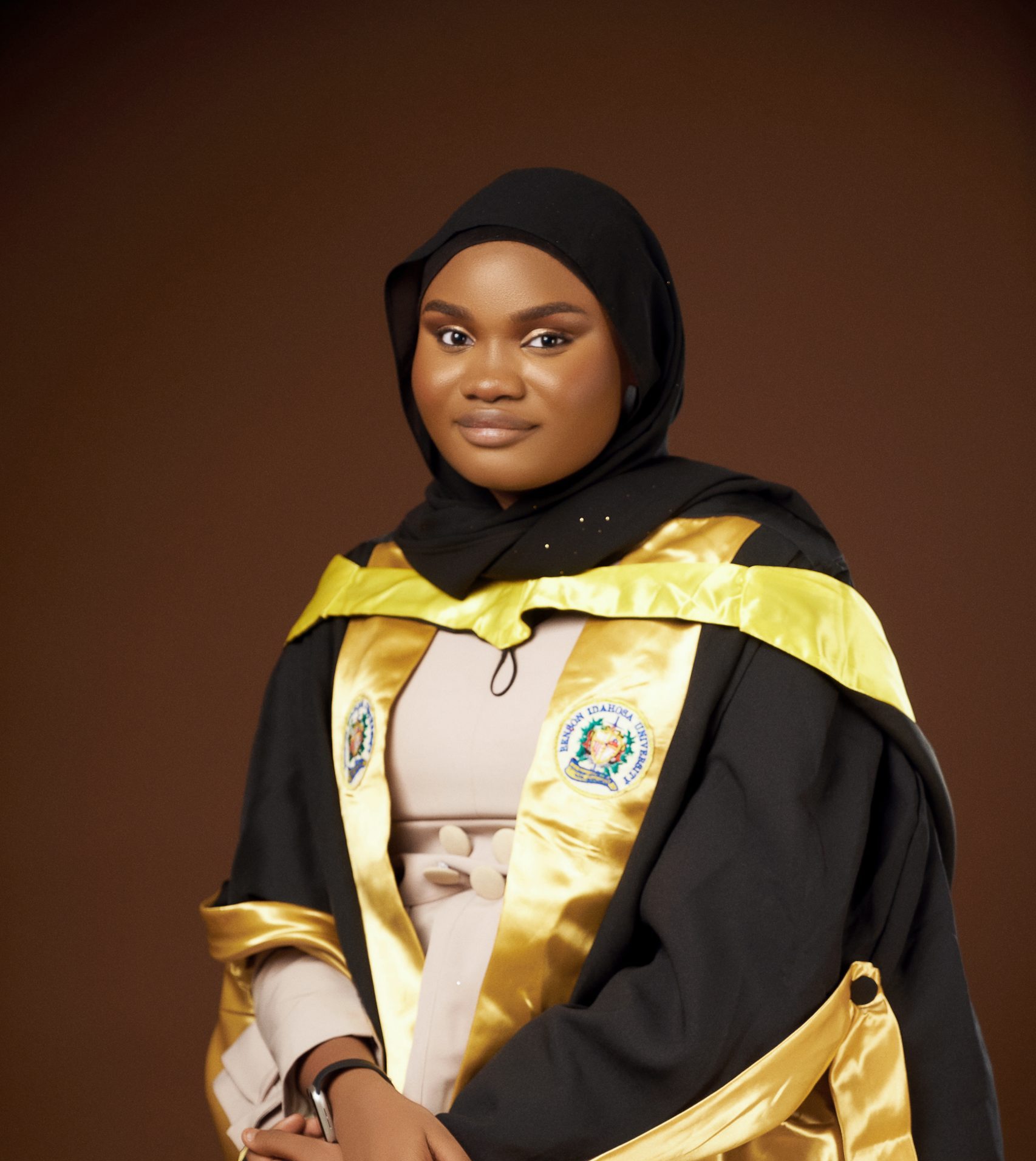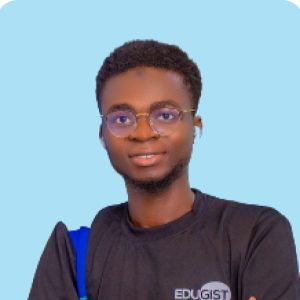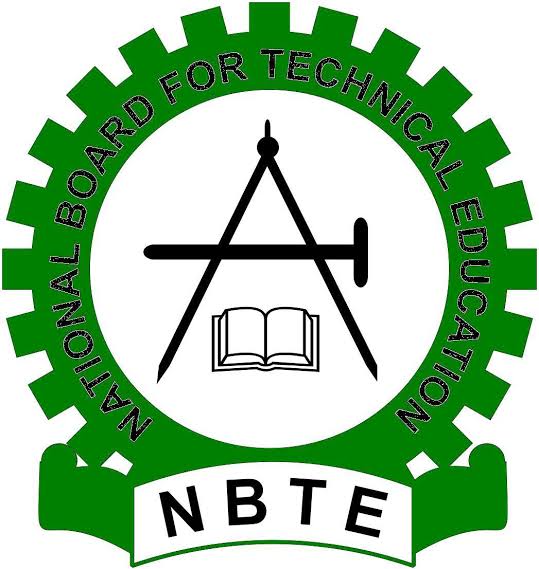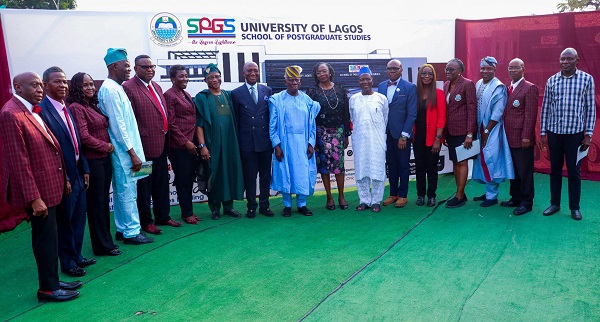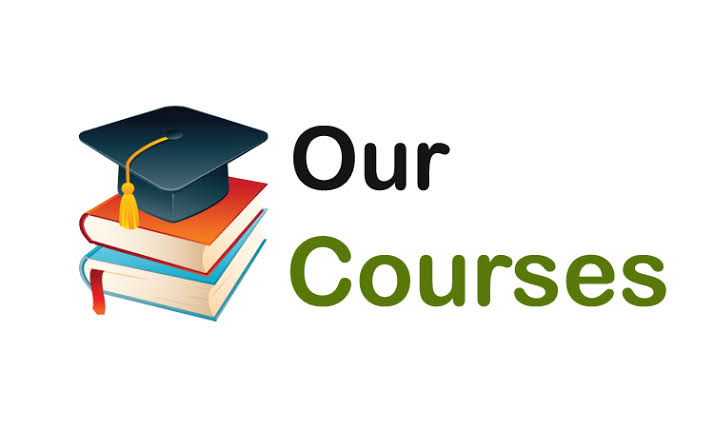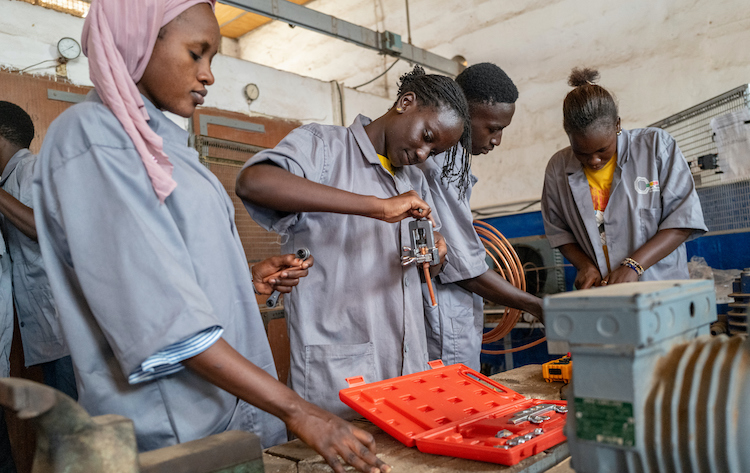Semira Yesufu is a first-class graduate of computer science from Benson Idahosa University, Edo state. She graduated with a cumulative grade point average (CGPA) of 4.97 out of a possible 5.00. She shares with Edugist her aspiration to lead a product design team at Google, among other things. Excerpts
Please share with Edugist a little about yourself and your background
I am Semira Yesufu, an indigene of Agbede, Edo state, Nigeria and a practising Muslim. I come from a large family of nine children and I’m the youngest. This unique position has influenced who I am today. Growing up in a bustling household, I always wanted to stand out. I felt an inherent pressure to excel at everything I undertook.
In my family, success and achievement were the norm, and I was keen on not being the one to falter. This drive instilled in me made me set high standards for myself and to strive for excellence in all aspects of my life. Fast forward to today, and I’ve channelled that determination and drive into my career as a product designer based in Abuja, Nigeria. I specialise in crafting seamless user experiences, products, and stories.
My design work has had a significant impact, with solutions I’ve created being used by millions of individuals and hundreds of businesses across emerging markets in Africa and the USA. Outside of my professional work, I’m also a digital creator. I share educational content related to design and productivity on Instagram. My long-term goal is to establish a YouTube channel and turn online content creation into a full-time career, where I can continue to educate and inspire ambitious designers and innovators.
In my downtime, you’ll often find me watching comedy series. It’s my friendly reminder not to take life too seriously. To stay inspired, I watch Ali Abdaal’s productivity videos on YouTube and have a good laugh listening to the “ISWIS” podcast, which feels like chatting with my virtual big sisters.
Could you tell us about your academic journey and achievements as a first class graduate in computer science?
I studied computer science at Benson Idahosa University, and from day one, I had one clear mission: to be the top graduate in my class. To make this dream a reality, I knew I had to start believing in myself and work relentlessly towards my goal. So, I did something that might sound a bit quirky but turned out to be a game-changer for me. I created a list of the grades I needed to score in each course from my first year to my final year and let me tell you, it was packed with straight As. This list became my source of motivation, my wall of ambition. I carried it with me everywhere I lived on campus, and it served as a constant reminder of what I was striving for.
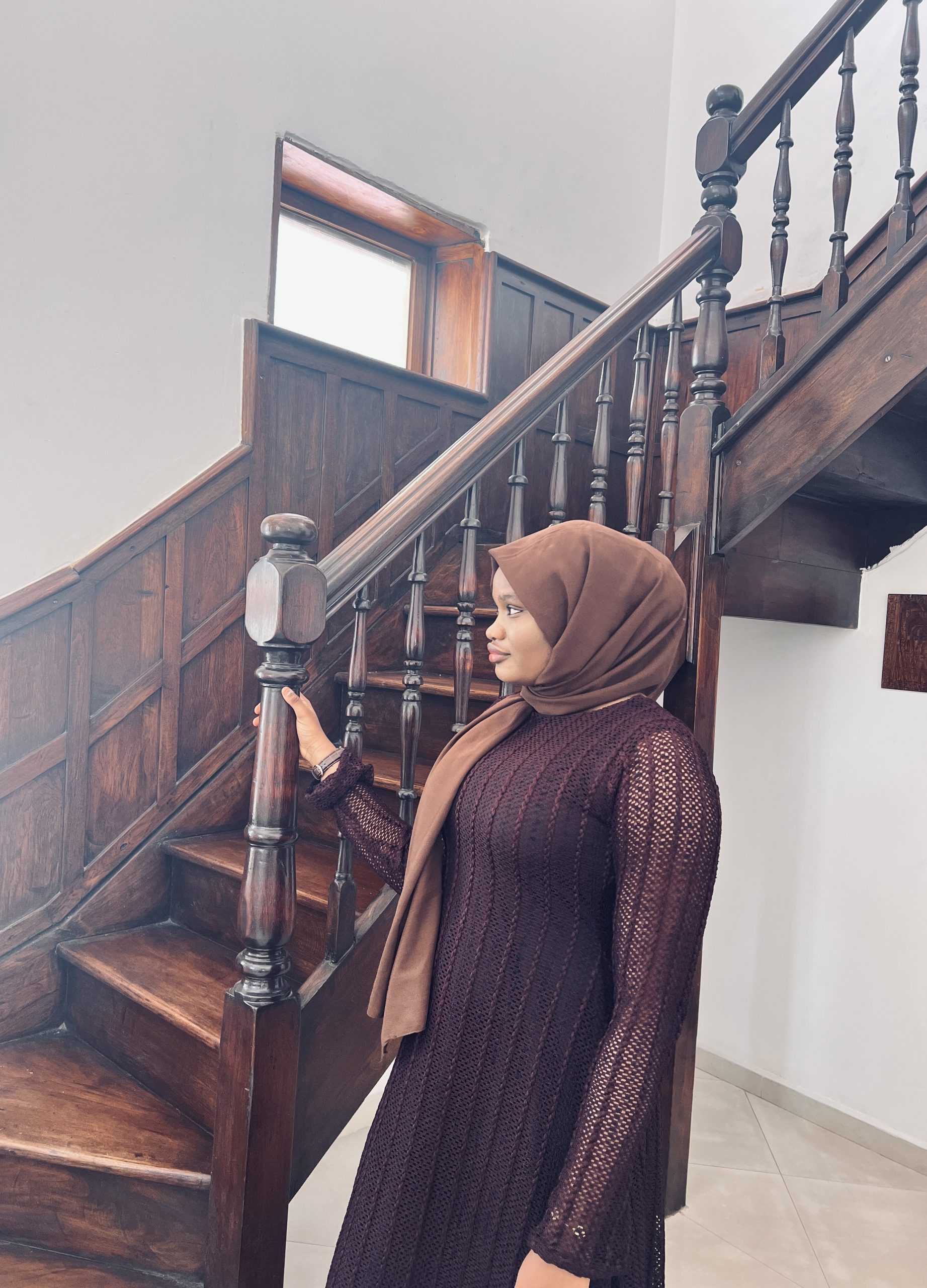
Now, let’s talk about the bumps on this journey. I faced some bullying along the way, partly because I was a high achiever and partly because of who I am (a hijabi). There were times when my assignments mysteriously disappeared after submission, and I had to deal with lecturers scolding me for not turning them in. It was frustrating. I also had to deal with a lot of stereotypes. People couldn’t quite grasp how a woman who dressed like me, wearing a hijab, could be so smart. But these challenges only fueled my determination. I wanted to prove that someone like me could achieve great things.
On my graduation day, I held my hijab head up high with immense pride. I’d earned not one, not two, but five awards, and I was named the valedictorian of the faculty of sciences with a stunning CGPA of 4.97. It was all worth it, every late-night study session. And as I was receiving those awards, my mom couldn’t contain her pride. She kept saying, “That’s my daughter,” to anyone who chose to listen, her face beaming with pride. I’d do it all over again in a heartbeat to reach that moment of accomplishment.
What motivated you to pursue a degree in computer science, and how has your education prepared you for a career in the field?
My journey into the world of technology and computer science was ignited by a simple yet profound discovery during my early teenage years. I vividly remember the day when, as a struggling JSS 1 student, I sought help with my school assignment. That’s when my uncle introduced me to something truly magical – Google. He explained that I could ask it anything, and it would provide me with answers. I was instantly captivated by this concept, and for the rest of that day, my 13-year-old self was engrossed in asking Google all sorts of questions, amazed at how it magically responded, and that curiosity sparked a fire within me. I began by learning typewriting skills and also IT networking and troubleshooting skills.
Before long, I became the go-to person in my household for fixing gadgets, conducting research online, and handling word processing tasks. My love for technology and knack for problem-solving was undeniable. Alongside my passion for tech, I had another love – design and creativity. So, when it was time to choose a college major, I naturally gravitated towards computer science, driven by my fascination with tech and my desire to solve real-world problems.
After completing my studies in computer science at university, I found myself at a crossroads, wondering how to combine my passion for design with my computer science degree. It was during this period of exploration that I stumbled upon product design. It felt like the perfect fit, blending my love for technology with my creative side. Imagine this: I could design solutions that worked like magic, just like Google did for me back then. I could make them not only functional but also seamlessly beautiful. And what’s more, my designs would be the guiding force for bringing these ideas to life. Sounds cool right? My transition into design enriched my skill set and perspective, thanks to my solid foundation in computer science. My education not only provided technical knowledge but also nurtured my ability to approach design challenges with creativity and adaptability.
Could you explain a complex technical concept related to computer science in a way that would be understandable to a non-technical audience?
Certainly. Let me break down the concept of artificial intelligence (AI) in a way that’s easy to understand. Artificial intelligence is making computers think like humans. Imagine you have a very clever robot friend, this robot can do more than just follow your commands; it can think, learn, and solve problems on its own. That’s a bit like what artificial intelligence (AI) is all about.
AI is the science of making computers and machines think and act like humans. It’s like giving them a brain to process information, learn from it, and make decisions. Here’s how it works. AI systems start by learning from a lot of information, it’s similar to how you learn by reading books, watching videos, or talking to people. AI systems “read” lots of data to understand different things, like you think through problems and come up with solutions, AI systems use their “thinking” power to solve complex problems. They follow logical steps to make decisions. AI isn’t static; it’s dynamic. It can change and adapt based on new information. It’s like if your robot friend learns a new skill when you show it something new. AI can do tasks automatically, without needing constant human input. For example, it can help with things like sorting emails, recognising faces in photos, or even driving cars.
Have you participated in any internships or practical experiences during your time at university? How did these experiences contribute to your professional growth?
Yes, during my time at university, I had the opportunity to intern at Setraco Limited in my 300 level, where I worked as an IT technical support intern. This internship wasn’t just about boosting my technical skills; it was like a window into the corporate world. I learnt the ropes of workplace ethics, professionalism, and how things work beyond the classroom. It was eye-opening. And you know what? This experience wasn’t just a checkbox on my university journey; it was the launch pad for my career. It set me up for my very first job as a remote social media strategist at Simplex Code, an edtech centre in London.

In your opinion, what are the most significant challenges and opportunities currently facing the field of computer science?
In my opinion, the field of computer science grapples with several critical challenges today. First and foremost, an outdated school curriculum poses a significant hurdle. Technology is evolving at a rapid pace, and our educational systems need to keep up. Many computer science programmes still rely on traditional methods and may not adequately cover emerging technologies and trends, leaving students ill-prepared for the dynamic industry they are about to enter.
Another challenge is the lack of exposure to the diverse career opportunities within the field of computer science. While coding and programming are important, numerous non-coding roles are equally crucial. Many individuals may not be aware of career paths such as product management, product design, scrum master, technical writing, and more. Focusing solely on coding can limit students’ understanding of the breadth and depth of opportunities available in the tech industry.
Also, the underrepresentation of women poses yet another substantial challenge in computer science. Historically, the field has been dominated by men, despite ongoing efforts to promote diversity and inclusion. The gender gap persists not only in educational institutions but also in the workforce. This lack of women pursuing careers in computer science stems from various factors, including societal stereotypes, biases, and a lack of early access to STEM education for girls. This gender disparity not only restricts the diversity of perspectives within the industry but also deprives the field of a significant portion of its potential talent pool. It’s precisely why I decided to take action. Recognising the importance of addressing these challenges, I founded Path4Her, a female-centred community dedicated to empowering young women and teenage girls. Through training, outreach programmes, and scholarship opportunities, we aim to shed light on non-coding career paths within the tech industry.
Could you share your views on the ethical responsibilities of computer scientists?
When considering the ethical responsibilities of computer scientists, including those who, like me, are also product designers, there are several crucial aspects to address. Ethical responsibility begins with designing products and systems that prioritise the well-being and needs of users. It’s about creating technology that enhances lives while respecting privacy and user autonomy. Computer scientists have a moral obligation to ensure that products are inclusive and accessible to everyone, regardless of their abilities or backgrounds. This means removing digital barriers and striving for equitable access. Ethical product designers empower users to make informed decisions. This means providing meaningful choices and customisation options, ensuring that users have control over their digital experiences.
Do you have any role models you look up to in the field of computer science?
Certainly, when it comes to role models in the field of computer science, I have two individuals who have left a profound impact on me. Firstly, after watching the inspiring movie “Hidden Figures,” I couldn’t help but admire Dorothy Vaughan. She was not only an expert Fortran programmer but also a trailblazer who defied extreme stereotypes and racism to make significant contributions to the first US space programme, ultimately helping to put a man on the moon and bring him safely back to Earth. Her resilience and dedication in the face of adversity serve as a constant source of inspiration.
In product design, I look up to Mitchelle Chinedu as a role model. Her journey from being a makeup artist to becoming a global product design leader is nothing short of inspirational. Her story highlights the transformative power of passion, perseverance, and continuous learning, qualities that resonate deeply with me as I navigate my path in the world of digital product design.
The ability to adapt to new technologies and learn quickly is vital in the ever-changing field of computer science. Can you describe a time when you had to quickly learn a new computing framework to accomplish a task or project?
In a previous role, the team I was part of needed a solution for documentation and project planning solution. After evaluating numerous options, we decided to embrace Notion for its flexibility and collaborative features. Surprisingly, none of us had prior experience with this tool. I navigated the process of adapting to and mastering Notion for our project. My journey began with a deep dive into the Notion interface and its features. I dedicated time to watching introductory videos and reading the getting-started guides provided by Notion. To truly internalise my newfound knowledge, I rolled up my sleeves and engaged in hands-on practice. I kicked things off by integrating Notion into my tasks and note-taking routines. This immersive experience allowed me to not only become comfortable with the interface but also master the art of creating pages, tables, and databases, and effectively organising content within Notion.
How do you stay updated with the latest advancements and trends in the field of computer science?
I love exploring bite-sized articles on Medium. It’s a fantastic platform to stay updated with fresh insights and trends. I often find myself immersed in topics that resonate with my interests, all while absorbing knowledge in manageable chunks. To enhance my skills as a digital product designer, I turn to the UXCel app. It’s not just about learning; it’s about gamifying the process with quizzes and games. It makes keeping up with UX and design trends a fun and engaging journey.
I’ve curated my social media platforms to be a treasure trove of educational content tailored to my career. By following thought leaders and educational accounts, my daily scroll becomes an enriching experience, offering insights and updates right at my fingertips. I occasionally enrol in online courses and attend webinars hosted by experts in the field. This structured learning allows me to delve deep into specific subjects and emerging technologies, all while accommodating my schedule.
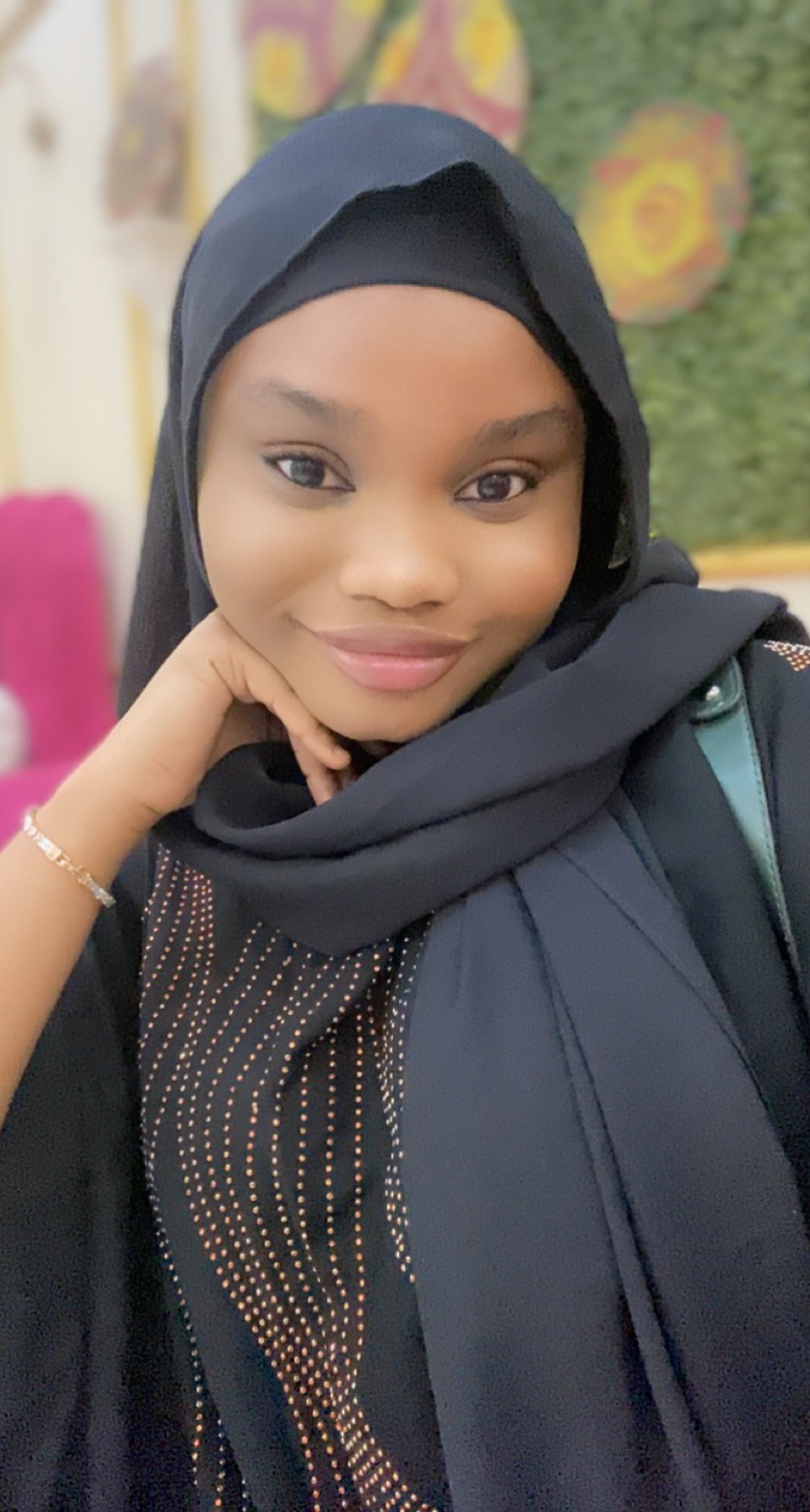
What are your long-term career goals and how do you plan to achieve them?
My long-term career goals are twofold. First, I aspire to become a Product Design Lead at Google. This aspiration has deep roots as Google’s products, from its renowned search engine to its educational certificate programmes, have played a pivotal role in shaping my personal and professional journey. Joining a company with such a profound impact on the world would truly be a dream come true for me.
Secondly, I am dedicated to establishing a thriving YouTube channel and ultimately transitioning into a full-time career in online content creation. Through this platform, I intend to share my knowledge, and educate, and inspire the next generation of designers and innovators.
What sets you apart from other first-class computer science graduates?
What sets me apart from other first-class computer science graduates is my multifaceted background and experiences. While academic achievements are important, I also bring a unique blend of skills and interests to the table that include a deep passion for design and creativity, a commitment to practical application, diverse interests beyond computer science, resilience, adaptability, and a clear vision for personal growth and making a positive impact. These qualities make me a well-rounded individual with a range of experiences and ambitions beyond traditional academics.
After your bachelor’s degree, what next?
After completing my bachelor’s degree, I embarked on a career path in product design. My next steps involve continuous growth and advancement in this field through gaining valuable experience and furthering my education. These endeavours are crucial in shaping my long-term career goal. Additionally, I’ve initiated my journey as a content creator, where I currently share valuable insights on design and productivity via platforms like Instagram.



